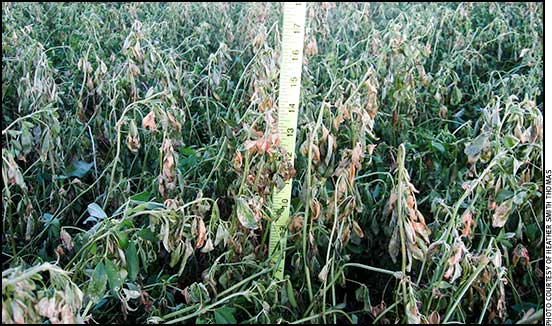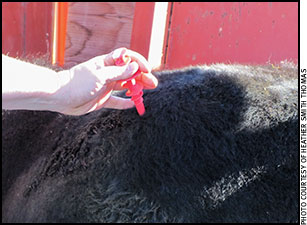
Avoid Bloat on Fall Pastures
A freeze can make pastures deadly if proper safeguards aren’t taken.
Bloat is sometimes a serious emergency, and fall pastures may be risky under certain conditions. Dick Fredrickson, staff veterinarian for J.R. Simplot Co., Santa Clara, Calif., says alfalfa is particularly deadly for the first few days after a hard frost.
“Freezing breaks down cell walls in the leaves, and this releases all the protein and carbohydrates all at once,” he explains.
This puts a big load of soluble protein in the rumen immediately, rather than the animal digesting it and breaking it down gradually. Rumen microbes can’t digest it in an orderly fashion. The fine particles and overload of soluble proteins creates excess gas in a froth that tends to rise above the valve to the esophagus. The animal cannot belch to get rid of the gas.
After several days, however, if it was a killing frost, the plants will dry out and go dormant, and then it will be safer to graze.
“To prevent bloat in the fall, keep cattle off lush alfalfa until at least a week after a killing frost. If they are already on the pasture, get them off and keep them off until the plants are dry — unless you are using Bloat Guard®. This product is fairly effective (proloxalene helps keep froth from forming in the rumen), but cattle need to be eating it for a few days before the bloat risk,” he says. You can’t just put out blocks the day you move cattle into the alfalfa, or the day you had frost.

As a last resort, you can puncture the rumen, preferably with a trocar.
Bloat Guard products are only effective if all the cattle consume an adequate amount each day.
“One way to make sure they do is to put it into their drinking water, but this is expensive,” says Fredrickson.
“Another thing I’ve heard of people doing is to put unscented laundry soap (the powder/granulated form) in a plastic bottle like a gallon jug. Poke holes in the plastic bottle and fill it with soap and put it in the drinking water. Non-detergent laundry soap is a good anti-foaming agent that will break the surface tension.”
If the cattle drink a little of this with their water, it will prevent bloat. Putting soap in a bottle with holes in it dispenses the soap slowly into the water instead of all at once. The soap is not toxic, and the cattle won’t avoid drinking it if you use non-scented soap.

Make sure you go into the cow’s left side, in the middle of the triangle between hip bone, back bone and ribs. A cannula helps keep the hole open.
“Always put cows out late in the day — when there is no dew on the alfalfa — rather than early morning. By then they may also be less hungry (and won’t load up so much on alfalfa) if you’ve fed hay before they go out,” says Fredrickson. “Remember that fall pastures that are lush and green can sometimes be risky not only for bloat but also for grass tetany.”
Treatment for bloat
“Bloat Guard is effective as a drench, put directly into the rumen. For frothy bloat I prefer this (proloxalene) over mineral oil, but mineral oil will help. As a last resort, you can puncture the rumen, preferably with a trocar. But if all you have is a pocket knife, use it — to keep that cow alive. Make sure you go into the cow’s left side, in the middle of the triangle between hip bone, back bone and ribs. A cannula helps keep the hole open.”
“Once you let off as much gas/froth as possible, put some proloxalene or mineral oil directly into the rumen through the cannula. If you don’t have any you could use a little soap — just something to break up the froth. If froth starts to plug the opening, stick the trocar through it, or a wire — anything to keep it open. That’s why a cannula works so well when you have to stick an animal; it keeps an opening, and keeps most of the fluid from running down between the skin and the rumen into the peritoneum,” he says.
“If you stick a cow, give her antibiotics, like long-lasting tetracycline, to head off peritonitis.” If you had to use a knife, you might need your veterinarian to stitch up the cow later.
Editor’s Note: Heather Smith Thomas is a freelance writer and cattlewoman from Salmon, Idaho.







